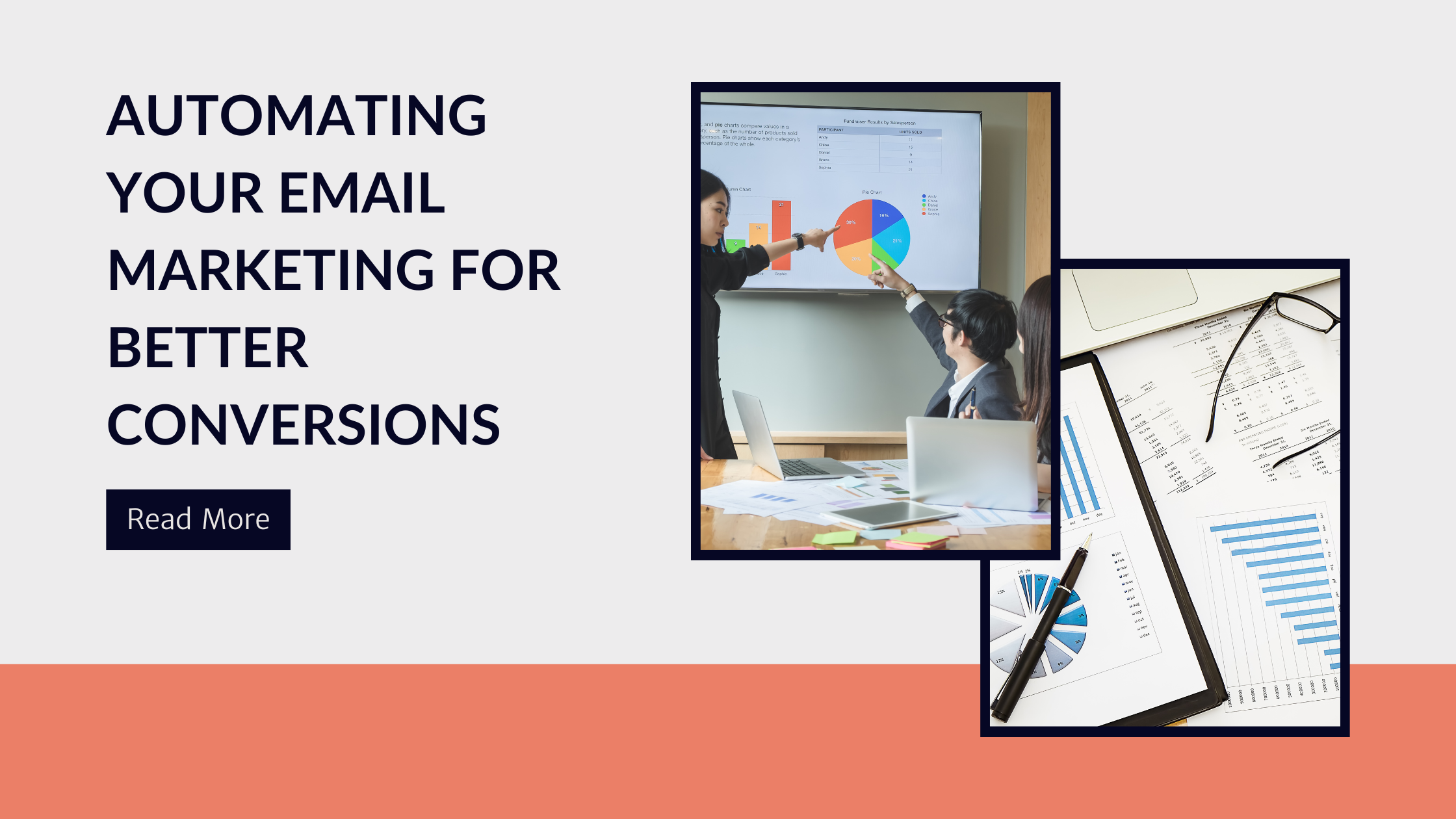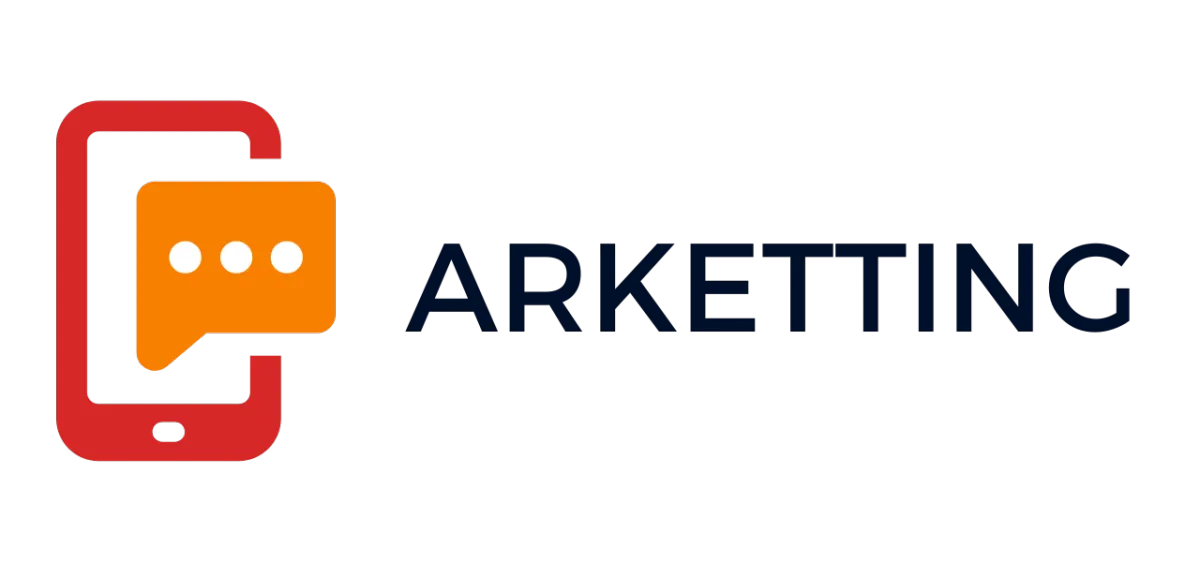
Step-by-Step Guide to Automating Your Email Marketing for Better Conversions
Step-by-Step Guide to Automating Your Email Marketing for Better Conversions

Have you ever felt overwhelmed by the sheer volume of emails cramming your inbox, yet realized how essential email communication is for your business? Imagine transforming this chaos into efficiency through automation! In this guide, I'm here to show you not just how automation can revolutionize your email marketing, but how it can drive better conversions and create lasting customer relationships. We’ll explore the world of email marketing automation together, taking a step-by-step approach to make it as simple as possible. Buckle up as we dive into practical strategies and tools that can change the way you communicate with your audience!
Introduction
Email marketing is not just a trend; it’s a vital part of modern business strategy. In fact, it remains one of the top-performing digital marketing channels. Why? Because it allows you to reach your audience directly in their inboxes. But how do you make the most of it? That’s where automation comes in.
Why Automation Matters
Imagine spending less time on repetitive tasks. Sounds great, right? Automation can help you achieve that. By automating your email marketing, you can:
Save time: Focus on creative strategies instead of manual tasks.
Increase conversions: Send personalized messages at the right time.
Enhance efficiency: Streamline your processes for better results.
As a marketing executive once said,
"Email marketing is the backbone of our customer communication strategy!"
This highlights the importance of having a clear strategy from the outset. You need to know your goals and how to achieve them.
Getting Started
In this guide, we’ll explore the importance of email marketing and how automation provides a strategic advantage. You’ll learn how to engage customers effectively and personally. So, are you ready to dive in? Let’s get started!
Step 1: Define Your Email Marketing Goals
Before diving into the world of email marketing automation, you need to ask yourself: What do you want to achieve? Defining your goals is crucial. Whether it’s boosting sales, increasing engagement, or enhancing customer retention, clarity is key.
Identify Your Objectives
Sales: Are you looking to drive more purchases? Consider how email can lead customers to your products.
Engagement: Do you want to connect with your audience? Think about how to keep them interested in your content.
Retention: Is your goal to keep existing customers? Focus on strategies that encourage repeat business.
Once you’ve identified your objectives, it’s time to set measurable goals. This is where KPIs (Key Performance Indicators) come into play. They help you track your progress and adjust your strategy as needed.
Setting Measurable KPIs
Using the SMART criteria can help you formulate clear, actionable goals:
S: Specific - Define exactly what you want to achieve.
M: Measurable - Ensure you can track your progress.
A: Achievable - Set realistic goals.
R: Relevant - Align your goals with your business objectives.
T: Time-bound - Set a deadline for achieving your goals.
Examples of KPIs include:
Open Rates: Measure how many people are opening your emails.
CTR (Click-Through Rate): Track how many clicks your links receive.
Conversion Rates: Determine how many email recipients take the desired action.
Understanding your goals is the cornerstone of a successful email marketing strategy. It provides direction to your automation efforts. So, take the time to define what success looks like for you. It will pay off in the long run.
Step 2: Choose the Right Email Marketing Automation Tool
Choosing the right email marketing automation tool is crucial. It can make or break your email marketing efforts. With so many options available, how do you decide?
Top Email Automation Tools
Here’s a quick comparison of leading tools:
Konnectlia: Known for its user-friendly interface and robust analytics.
Mailchimp: Offers a free tier and is great for beginners.
HubSpot: Integrates well with other marketing tools, perfect for larger businesses.
ActiveCampaign: Excels in automation and segmentation features.
Essential Features to Look For
When selecting a tool, consider these essential features:
Intuitive Interface: You want something that’s easy to navigate.
Segmentation: This helps you target specific audiences effectively.
Analytics: Understanding your campaign performance is key.
AI Capabilities: These can enhance personalization and efficiency.
Before committing, consider taking advantage of referral programs or free trials. Testing a tool can save you from making a costly mistake. Remember, a good tool should simplify your marketing efforts, not complicate them.
"Choosing the right automation tool can make or break your email marketing efforts." - Digital Marketing Specialist
Selecting the appropriate tool directly influences the effectiveness of your email campaigns. So, take your time and choose wisely!
Step 3: Segment Your Audience for Personalization
Segmentation is a game-changer in email marketing. Why? Because it allows you to tailor your communication to specific groups within your audience. This means your messages resonate more, leading to better engagement and higher conversion rates.
Why Segmentation Matters
Imagine receiving an email that speaks directly to your interests. Feels good, right? That's the power of segmentation. When you segment your audience, you can deliver content that is relevant to them. This increases the chances of your emails being opened and acted upon.
Strategies for Effective Segmentation
Demographics: Consider factors like age, gender, and location. These basic details can help you craft messages that appeal to different groups.
Behavioral Data: Look at how your audience interacts with your emails. Are they clicking links? Opening messages? This data can guide your approach.
Purchase History: Knowing what your customers have bought in the past allows you to suggest relevant products or services. It’s like having a personal shopper!
Dynamic Segmentation with Automation
Thanks to automated tools, dynamic segmentation is easier than ever. These tools can update your segments in real-time based on customer interactions. This means you can adjust your messaging on the fly. If someone shows interest in a particular product, you can send them tailored content immediately.
A well-segmented audience enables more relevant content delivery, translating into higher conversion rates and engagement. So, why wait? Start segmenting your audience today and watch your email marketing efforts soar!
Step 4: Create High-Converting Email Sequences
Creating effective email sequences is crucial for nurturing leads and boosting conversions. But what types of sequences should you consider? Here’s a breakdown:
1. Types of Email Sequences
Welcome Series: This is your chance to make a great first impression. Welcome emails can set the tone for your relationship with new subscribers.
Lead Nurturing: These emails educate your prospects. They guide them through the sales funnel, providing valuable content that addresses their needs.
Abandoned Cart Emails: Did someone leave items in their cart? A gentle reminder can recover lost sales. You can even offer a discount to entice them back.
Re-engagement Campaigns: What about those inactive subscribers? A re-engagement email can rekindle their interest and bring them back into the fold.
2. Crafting Compelling Content
Now that you know the types of sequences, how do you make them effective? Start with compelling subject lines. They’re the first thing your readers see. Make them intriguing! Ask questions or create urgency.
Next, focus on your email copy. Keep it engaging and relevant. Use simple language. Break up text with bullet points or short paragraphs. This makes it easier to read.
3. Learn from the Best
Look at successful email campaigns for inspiration. What worked for them? You can also use A/B testing to see what resonates with your audience. Test different subject lines or email formats to find the winning combination.
Remember, effective email sequences can significantly impact your conversion rates. They guide your audience through the sales funnel, nurturing leads and turning them into loyal customers.
Step 5: Set Up Automation Workflows
Setting up automation workflows can feel overwhelming. But don’t worry! You can simplify the process with a few straightforward steps. Let’s dive into how you can create effective workflows that enhance your marketing efforts.
Designing Your Workflows
First, think about the structure of your workflows. Here are some tips to get you started:
Break it down: Divide complex workflows into smaller, manageable parts. This makes it easier to visualize and implement.
Use templates: Leverage existing templates to save time. Many automation tools offer pre-built workflows that you can customize.
Visual maps: Create visual maps to outline the steps in your workflow. This helps you see the big picture and ensures no steps are missed.
Implementing Triggers and Conditions
Next, it’s time to implement triggers and conditions. These are essential for adapting to customer behavior. Think of triggers as the starting point for your workflows. For example:
Email opens: If a customer opens an email, you can trigger a follow-up message.
Link clicks: If they click a specific link, you can send them targeted content related to that link.
Website visits: If a customer visits a product page, you can send a reminder email about that product.
By using these triggers, you can create a more personalized experience for your customers. It’s like having a conversation that flows naturally based on their interests.
Testing for Optimization
Don’t forget to test different scenarios! A/B testing is crucial for optimizing your workflows. Try different messages, timing, and triggers to see what resonates best with your audience. Remember, the goal is to maximize engagement.
“Automation workflows simplify and enhance the efficiency of your marketing efforts, allowing for a more personalized approach to each customer interaction.”
By following these steps, you’ll be well on your way to setting up effective automation workflows that drive better results. Are you ready to take your email marketing to the next level?
Step 6: Optimize for Deliverability & Engagement
When it comes to email marketing, deliverability is crucial. You want your emails to land in your audience's inbox, not their spam folder. So, how do you achieve that?
Best Practices to Avoid Spam Filters
Use a reputable email service provider (ESP). This can significantly reduce the chances of being flagged as spam.
Authenticate your emails with SPF, DKIM, and DMARC. These protocols help verify your identity as a sender.
Avoid spammy language. Words like "free," "guarantee," or excessive exclamation marks can trigger filters.
Keep your email list clean. Regularly remove inactive subscribers to maintain a healthy engagement rate.
The Role of Personalization and Dynamic Content
Personalization is more than just adding a name to the subject line. It’s about creating a tailored experience for your readers. Dynamic content can adjust based on user behavior or preferences, making your emails more relevant.
For instance, if you know a subscriber loves sports, sending them updates about sports gear can increase engagement. This relevance can lead to higher open rates and click-through rates (CTRs).
Remember, content relevance and timeliness can significantly influence your email's success. When your emails resonate with your audience, they're more likely to engage.
So, are you ready to optimize your email strategy? Start implementing these best practices today!
Step 7: Analyze & Improve Your Email Campaigns
To truly succeed in email marketing, you need to analyze and improve your campaigns regularly. But what should you focus on? Here are the key metrics to monitor:
Key Metrics to Monitor
Open Rates: This tells you how many people opened your email. A low open rate might indicate that your subject lines need work.
Click-Through Rates (CTRs): This measures how many recipients clicked on links in your email. If this number is low, your content might not be engaging enough.
Conversions: Ultimately, this is what matters most. Are your emails leading to sales or desired actions? If not, it’s time to rethink your approach.
Using Analytical Tools
Utilizing analytical tools can provide valuable insights. Tools like Google Analytics or specialized email marketing platforms can help you track these metrics effectively. They can show you what’s working and what’s not.
Setting up regular reviews of these metrics can lead to continual improvement over time. Think of it like tuning a musical instrument. The more you adjust, the better the performance.
Remember, the knowledge gained from analytics should guide your future marketing efforts. Regular analysis not only boosts current campaigns but informs future strategies, creating a cycle of continual improvement.
Are you ready to dive into your data? The insights you gain can transform your email marketing from average to exceptional.
Common Mistakes to Avoid in Email Automation
Email automation can be a game-changer for your marketing strategy. But, it’s not without its pitfalls. Avoiding common mistakes is crucial. Here are three major errors you should steer clear of:
1. Overloading Your Recipients with Excessive Emails
Have you ever felt bombarded by emails? It’s overwhelming, right? Sending too many emails can annoy your audience. They might even unsubscribe. Aim for quality over quantity. A well-timed email can be more effective than a flood of messages.
2. Neglecting the Importance of Personalization
Generic emails are easy to spot. They lack engagement. Personalization makes your audience feel valued. Use their names, recommend products based on their past purchases, or tailor content to their interests. It’s like having a conversation instead of a monologue.
3. Failing to Test and Optimize Email Content
Testing is essential. You wouldn’t launch a product without testing it first, right? The same goes for emails. A/B testing subject lines, content, and send times can drastically improve your results. Don’t just set it and forget it. Optimize continuously.
Learning from both successes and mistakes is key to improving your email marketing strategies. Remember, mistakes can be costly in terms of both time and reputation. Avoiding these common pitfalls will help maintain a positive relationship with your audience, ultimately leading to better conversion rates.
Conclusion & Call-to-Action
You've made it to the end of this guide on automating your email marketing. Now, let’s recap the key steps to ensure you’re ready to take action.
Key Steps for Automation
First, define your email marketing goals. What do you want to achieve? Next, choose the right automation tool that fits your needs. Remember to segment your audience for personalized communication. Create high-converting email sequences that resonate with your audience. Then, set up automation workflows that trigger based on user behavior. Don’t forget to optimize for deliverability and engagement. Finally, analyze your campaigns regularly to improve your strategy.
Now, it’s your turn! Have you tried automating your email marketing? What challenges did you face? Or maybe you have tips to share? I encourage you to leave your experiences or questions in the comments below. Your insights could help someone else on their journey.
To assist you further, I’m offering a free checklist to help you set up your first email automation campaign. This resource can guide you step-by-step, ensuring you don’t miss any crucial elements. Empower yourself to take action today; your marketing efforts will benefit immensely!
Remember, building a community around shared experiences can be incredibly beneficial. Let’s learn and grow together!
TL;DR: This guide offers a detailed roadmap to automating your email marketing efforts, providing actionable steps for setting goals, choosing tools, segmenting audiences, crafting effective email sequences, analyzing performance, and avoiding common pitfalls to boost your conversion rates.


